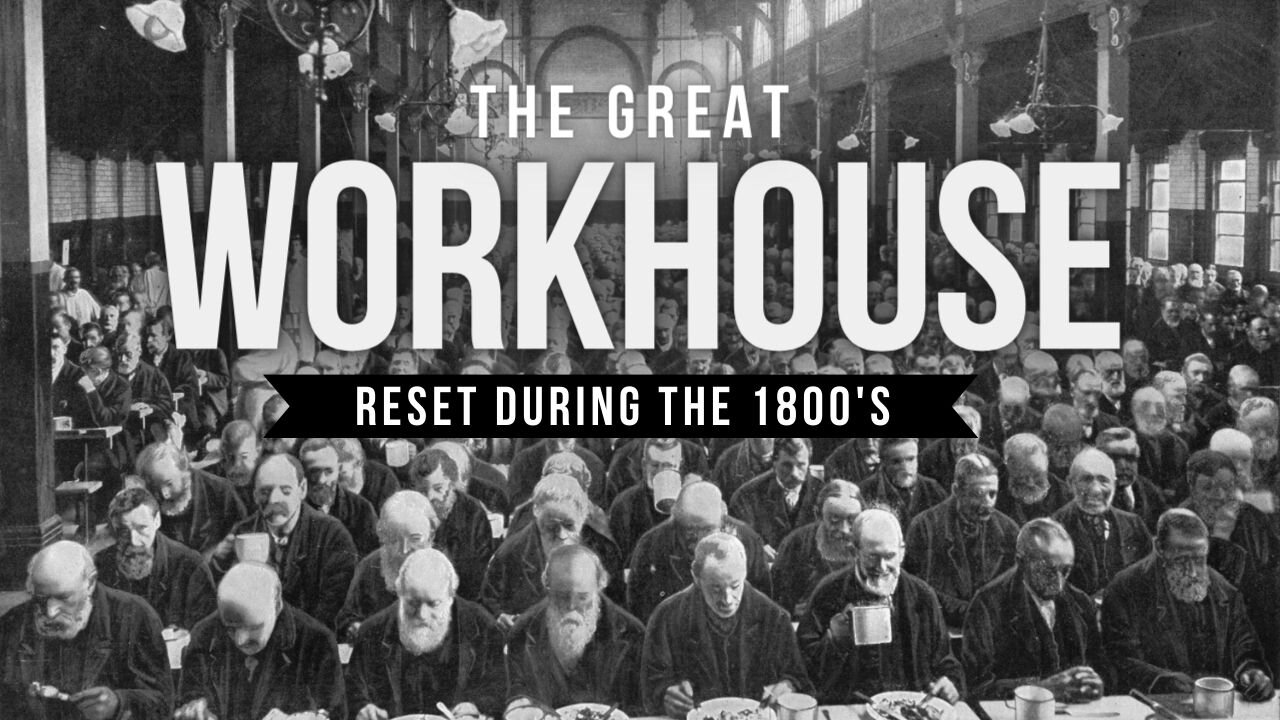Premium Only Content

The Great Workhouse Reset During the 1800's
The Narrative: Workhouses, or poorhouses as they were sometimes called, were institutions that emerged in the 1800s in Europe and the United States as part of the social safety net for the impoverished. Here's an overview of their history and function:
Origins: The concept of the workhouse dates back to the Statute of Cambridge in 1388, which was an attempt to address labor shortages in England following the Black Death. The statute restricted the movement of laborers and ultimately led to the state becoming responsible for the support of the poor.
19th Century Europe: In the 1800s, especially following the end of the Napoleonic Wars, Europe faced mass unemployment and a series of bad harvests. This led to the establishment of workhouses, which were designed to provide accommodation and employment to those who could not support themselves financially.
The New Poor Law: In 1834, the New Poor Law was introduced in Britain, which aimed to discourage the provision of relief outside of workhouses. The law hoped to make workhouses self-sufficient by utilizing the free labor of inmates for tasks such as breaking stones, crushing bones to produce fertilizer, or picking oakum.
Conditions: Life in workhouses was intentionally harsh to deter people from seeking assistance. Inmates lived in overcrowded and often unsanitary conditions, performing menial and physically demanding tasks. The diet was meager, and the discipline was strict.
Evolution: Over time, workhouses became more of a refuge for the elderly, infirm, and sick rather than the able-bodied poor. By the late 19th and early 20th centuries, many workhouses had evolved into institutions that provided more specialized care for these groups.
Abolition and Legacy: Workhouses were formally abolished in Britain in 1930, but many continued under the new name of Public Assistance Institutions. It wasn't until the introduction of the National Assistance Act in 1948 that the last vestiges of the Poor Law disappeared, marking the end of workhouses in Britain.
In the United States: The workhouse system was also adopted in the U.S., with the first workhouse built in Boston in 1660. The American workhouses were similar to their European counterparts, serving as a means to manage poverty by requiring work in exchange for support.
The workhouse system reflects a time before modern social services, when society's approach to poverty was punitive and stigmatizing. These institutions are a reminder of the historical attitudes towards poverty and the evolution of social welfare systems.
SOURCE
Lucius Aurelian
-
 47:15
47:15
The Aquarius Bus
9 months agoTour The Most Expensive Tartarian Gilded Age Mansion in America
2.24K6 -
 1:07:22
1:07:22
Dr. Drew
4 hours agoTargeted: Political Violence Began Long Before Charlie Kirk's Assassination – Leftist Influencers Like Hasan Piker Are Making It Worse w/ Dave Rubin & Jack Posobiec – Ask Dr. Drew
4.01K1 -
 1:19:08
1:19:08
TheSaltyCracker
2 hours agoSaltCast 9-25-25
22K63 -
 LIVE
LIVE
StoneMountain64
2 hours agoBattlefield 6 News and Extraction Gaming
204 watching -
 24:15
24:15
Stephen Gardner
2 hours agoCharlie Kirk Bombshell: Fresh Video Footage Shatters the Narrative!😱
30.2K80 -
 9:51
9:51
Silver Dragons
2 hours agoSILVER PRICE SOARING - Is Silver In the END GAME Now?
20.9K3 -
 1:28:13
1:28:13
Russell Brand
4 hours agoThe Truth About UK Corruption – Andrew Bridgen Speaks Out - SF640
174K41 -
 2:11:52
2:11:52
Side Scrollers Podcast
5 hours agoYouTube ADMITS BLATANT Censorship + California Wants to FINE “Hate Speech” + More | Side Scrollers
45.2K3 -
 15:26
15:26
Simply Bitcoin
1 day ago $0.86 earned$60 Trillion Incoming? | Why Gold & Bonds are Screaming "BUY BITCOIN"
17.7K3 -
 1:55:59
1:55:59
The Charlie Kirk Show
4 hours agoDebunking the Lies and Smears about Charlie | ThoughtCrime Team | 9.25.2025
101K67